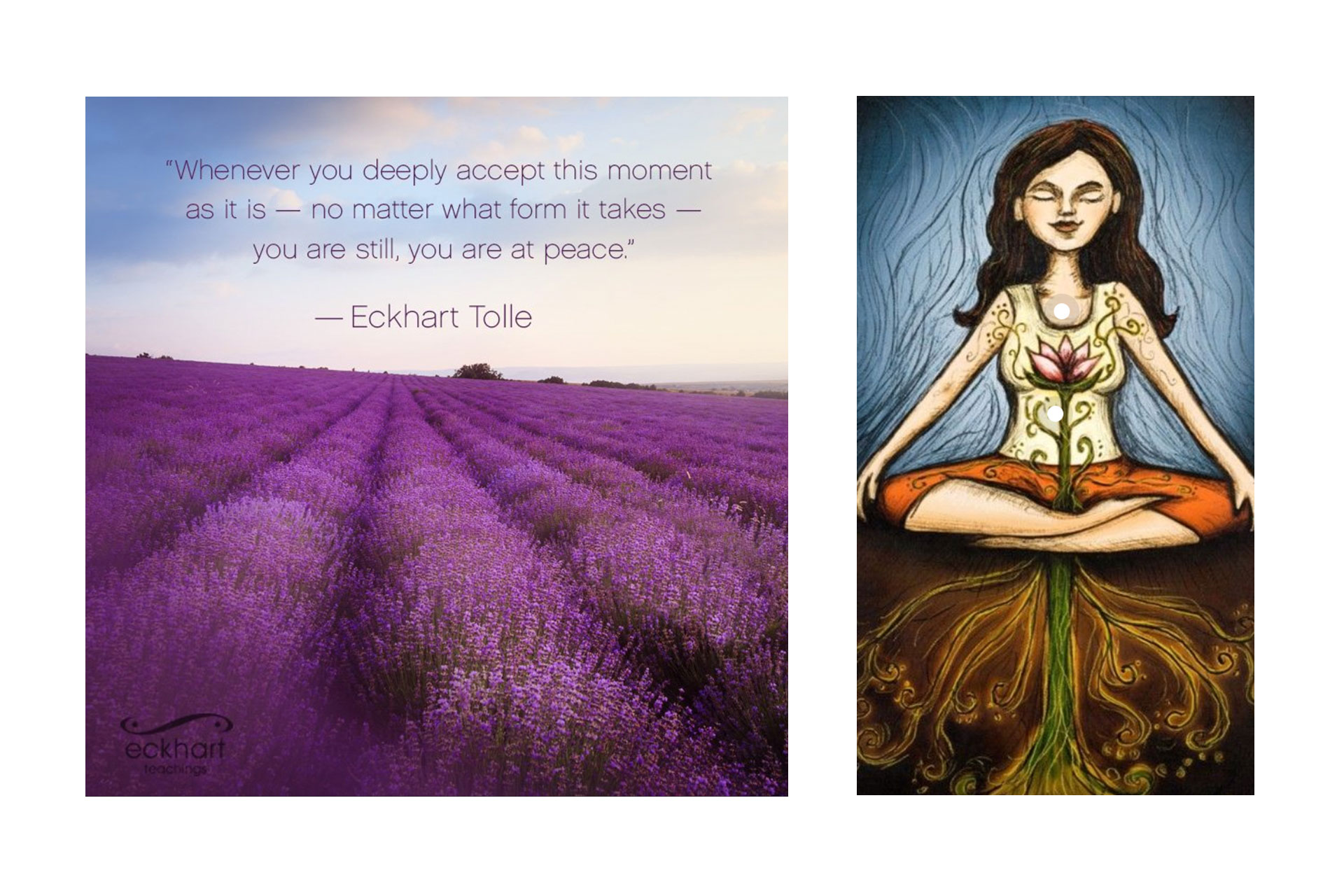“My heart might be bruised, but it will recover and become capable of seeing the beauty of life once more. It’s happened before, it will happen again, I’m sure.” ~ Paulo Coelho
With several weeks of shelter-in-place orders and juggling the stress of numerous responsibilities. It’s normal to feel off-balance, unsettled and unstable right now with the stresses of dealing with confinement; managing distance-learning; caring for children and/or older parents; getting bombarded by news updates on the spread and fatalities of the virus; and hearing about family, friends, and colleagues who have been affected by Corona Virus. Even the most stable leaders have had the figurative wind knocked out of them by COVID19.
This is a time in our lives that we’ve never experienced before. No one knows what will happen next and the only constant we are all experiencing is change. How do you remain steady, sane and grounded when the world seems to be collapsing around us? How do you find true north when it feels like we are all living in the upside down? We’re all feeling stressed, anxious, out-of-control and we all have fears about how life is going to be once this crisis passes. To prepare for brighter days, it’s important to take care of ourselves in the here and now.
Everything I am about to show you in the next 45 minutes are science-backed, beta tested by me personally and field-tested on my clients. They are practical, easy to implement and most of them are free.
I like to begin my presentations by ensuring that we are all operating from the same vocabulary. Let’s take a look at the word grounded and it’s definition
Comes from the Germanic and has the association with the earth – fix firmly and stably as in your feet on the ground. Another context comes from electrical engineers. When electricians ground circuits for safety so we don’t get electrocuted. That action literally re-routes the electricity back to the earth in order to keep the human body safe.
You could also think of it in a safety context for example, a plane can be grounded for mechanical or weather issues or you could ground your child in order to protect them from getting into unsafe situations. All these definitions have the same common thread, stability and safety…qualities that are constantly being assaulted in our world right now.
We must begin by feeling our feelings and embrace the pain we are experiencing. We are certainly living in weird times. We don’t know what to think or how to feel. We might fear getting sick, or worry about our family and friends. Many of us fear the loss of income and wonder how we’ll pay our bills. In our social isolation, left alone with our thoughts and emotions as company, we might become lonely and feel lost.
It’s important to notice how we’re feeling, name it and know that it will pass rather than avoiding it or ignoring it. Running away from pain only gives it more power to grow, so that it becomes much larger and scarier when it catches up with us (which it always does) and causes even more suffering.
In her book, Radical Acceptance: Embracing Your Life With the Heart of a Buddha, therapist and meditation teacher, Tara Brach, describes the practice of Radical Acceptance as making “ourselves available to whatever life is offering us in each moment.”
Make time to be still, to slow down your thinking, judging, and worrying. When we do this, we can actually heal our pain and have the compassion to help to ease the suffering of our friends and neighbors, giving our own life more meaning. Wrote Eckhart Tolle, “Whenever you deeply accept this moment as it is — no matter what form it takes — you are still, you are at peace.” And, when accepting this moment, rather than numbing it, “You become aligned with the power and intelligence of Life itself. Only then can you become an agent for positive change in the world.”
Whatever it is that you’re feeling, know that there are many of us likely feeling the same way. Right now, we are all in this together. There’s a strange sense of comfort in that. We might be socially isolated, but we’re not alone with our experience. How can you steady yourself internally when the external world is constantly knocking you off-balance? We start by using grounding techniques.
Grounding is a practice that can help you pull away from flashbacks, unwanted memories, and negative or challenging emotions. These techniques may help distract you from what you’re experiencing and refocus on what’s happening in the present moment.
You can use grounding techniques to help create space from distressing feelings in nearly any situation, but they’re especially helpful if you’re dealing with:
- anxiety
- post-traumatic stress disorder
- dissociation
- self-harm urges
- traumatic memories
- substance use disorder
Our brains learn in contrast, let’s experience what it’s like to feel ungrounded. Here are some symptoms:
- Get distracted easily
- Space out
- Over-think or ruminate
- Engage in personal drama
- Experience anxiety and perpetual worrying
- Possessed by desire for material things
- Easily deceived by yourself or others
- Obsessed with your personal image
Physical signs of being ungrounded include:
- Inflammation
- Poor sleep
- Chronic pain
- Fatigue
- Poor circulation
Being ungrounded is a worldwide epidemic and so deeply infused in our DNA that few of us even recognize the problem. Being ungrounded is the root cause of a great deal of human suffering.
Let’s start with a grounding exercise – I invite you to close your eyes. Take three deep breaths and engage the theater of your mind.
You’re walking barefoot on the beach.
Feel the warmth of the sun on your skin. Listen to the rhythm of the crashing waves.
Smell the ocean wind as it brushes by you. Taste the salt on your lips and feel the gentle ocean breeze caressing your body. Now, notice your feet. Do you feel a tingly sensation in your feet or legs as a warmth rises up your body? Tell me what you discovered about yourself during this exercise. Write your comments in the box below.
Perhaps you’ve noticed a similar feeling while walking barefoot on the grass. In those moments, you are grounded. It’s one reason many people are drawn to the ocean.
Being grounded can mean two things:
- Being fully present in your body and/or
- Feeling connected to the earth.
We’ve all experienced being grounded. We feel “at home”. This can be a fleeting experience unless we consistently practice grounding techniques to help us get and stay rooted in our bodies.
Grounding techniques will:
- Clear your mind,
- Recharge your energy,
- Strengthen your instincts, and
- Calm your emotions.
Grounding yourself, simply put is a form of mindfulness and meditation. Meditation is a mind and body practice that has a long history of use for increasing calmness and physical relaxation, improving psychological balance, coping with illness, and enhancing overall health and well-being. Mind and body practices focus on the interactions among the brain, mind, body, and behavior.
Let’s take a look at the research from the National Institute of health about the effects meditation has on our brain. Research suggests that meditation may physically change the brain and body and could potentially help to improve many health problems and promote healthy behaviors.
- In a 2012 study, researchers compared brain images from 50 adults who meditate and 50 adults who don’t meditate. Results suggested that people who practiced meditation for many years have more folds in the outer layer of the brain. This process (called gyrification) may increase the brain’s ability to process information.
- A 2013 review of three studies suggests that meditation may slow, stall, or even reverse changes that take place in the brain due to normal aging.
- Results from a 2012 NCCIH-funded study suggest that meditation can affect activity in the amygdala (a part of the brain involved in processing emotions), and that different types of meditation can affect the amygdala differently even when the person is not meditating.
Imagine yourself leaving the painful feelings behind
Picture yourself:
- gathering the emotions, balling them up, and putting them into a box
- walking, swimming, biking, or jogging away from painful feelings
- imagining your thoughts as a song or TV show you dislike, changing the channel or turning down the volume — they’re still there, but you don’t have to listen to them.
Together let’s break things down to a mind, body, heart, emotion, and spiritual practices of grounding ourselves.
Physical techniques
These techniques use your five senses or tangible objects — things you can touch — to help you move through distress.
1. Put your hands in water
Focus on the water’s temperature and how it feels on your fingertips, palms, and the backs of your hands. Does it feel the same in each part of your hand?
Use warm water first, then cold. Next, try cold water first, then warm. Does it feel different to switch from cold to warm water versus warm to cold?
2. Pick up or touch items near you
Are the things you touch soft or hard? Heavy or light? Warm or cool? Focus on the texture and color of each item. Challenge yourself to think of specific colors, such as crimson, burgundy, indigo, or turquoise, instead of simply red or blue.
3. Breathe deeply
Slowly inhale, then exhale. If it helps, you can say or think “in” and “out” with each breath. Feel each breath filling your lungs and note how it feels to push it back out.
4. Savor a food or drink
Take small bites or sips of a food or beverage you enjoy, letting yourself fully taste each bite. Think about how it tastes and smells and the flavors that linger on your tongue.
5. Take a short walk
Concentrate on your steps — you can even count them. Notice the rhythm of your footsteps and how it feels to put your foot on the ground and then lift it again.
6. Hold a piece of ice
What does it feel like at first? How long does it take to start melting? How does the sensation change when the ice begins to melt?
7. Savor a scent
Is there a fragrance that appeals to you? This might be a cup of tea, an herb or spice, a favorite soap, or a scented candle. Inhale the fragrance slowly and deeply and try to note its qualities (sweet, spicy, sharp, citrusy, and so on).
8. Move your body
Do a few exercises or stretches. You could try jumping jacks, jumping up and down, jumping rope, jogging in place, or stretching different muscle groups one by one.
Pay attention to how your body feels with each movement and when your hands or feet touch the floor or move through the air. How does the floor feel against your feet and hands? If you jump rope, listen to the sound of the rope in the air and when it hits the ground.
9. Listen to your surroundings
Take a few moments to listen to the noises around you. Do you hear birds? Dogs barking? Machinery or traffic? If you hear people talking, what are they saying? Do you recognize the language? Let the sounds wash over you and remind you where you are.
10. Feel your body
You can do this sitting or standing. Focus on how your body feels from head to toe, noticing each part. Can you feel your hair on your shoulders or forehead? Glasses on your ears or nose? The weight of your shirt on your shoulders? Do your arms feel loose or stiff at your sides? Can you feel your heartbeat? Is it rapid or steady? Does your stomach feel full, or are you hungry? Are your legs crossed, or are your feet resting on the floor? Is your back straight?
Curl your fingers and wiggle your toes. Are you barefoot or in shoes? How does the floor feel against your feet?
11. Try the 5-4-3-2-1 method
Working backward from 5, use your senses to list things you notice around you. For example, you might start by listing five things you hear, then four things you see, then three things you can touch from where you’re sitting, two things you can smell, and one thing you can taste.
Make an effort to notice the little things you might not always pay attention to, such as the color of the flecks in the carpet or the hum of your computer.
These grounding exercises use mental distractions to help redirect your thoughts away from distressing feelings and back to the present.
12. Play a memory game
Look at a detailed photograph or picture (like a cityscape or other “busy” scene) for 5 to 10 seconds. Then, turn the photograph face-down and recreate the photograph in your mind, in as much detail as possible. Or, you can mentally list all the things you remember from the picture.
13. Think in categories
Choose one or two broad categories, such as “musical instruments,” “ice cream flavors,” “mammals,” or “baseball teams.” Take a minute or two to mentally list as many things from each category as you can.
14. Use math and numbers
Even if you aren’t a math person, numbers can help center you.
Try:
- running through a times table in your head.
- counting backward from 100
- choosing a number and thinking of five ways you could make the number (6 + 11 = 17, 20 – 3 = 17, 8 × 2 + 1 = 17, etc.)
15. Recite something
Think of a poem, song, or book passage you know by heart. Recite it quietly to yourself or in your head. If you say the words aloud, focus on the shape of each word on your lips and in your mouth. If you say the words in your head, visualize each word as you’d see it on a page.
16. Make yourself laugh
Make up a silly joke — the kind you’d find on a candy wrapper or popsicle stick.
You might also make yourself laugh by watching your favorite funny animal video, a clip from a comedian or TV show you enjoy, or anything else you know will make you laugh.
17. Use an anchoring phrase
This might be something like, “I’m Full Name. I’m X years old. I live in City, State. Today is Friday, June 3. It’s 10:04 in the morning. I’m sitting at my desk at work. There’s no one else in the room.” You can expand on the phrase by adding details until you feel calm, such as, “It’s raining lightly, but I can still see the sun. It’s my break time. I’m thirsty, so I’m going to make a cup of tea.”
18. Visualize a daily task you enjoy or don’t mind doing
If you like doing laundry, for example, think about how you’d put away a finished load.
“The clothes feel warm coming out of the dryer. They’re soft and a little stiff at the same time. They feel light in the basket, even though they spill over the top. I’m spreading them out over the bed so they won’t wrinkle. I’m folding the towels first, shaking them out before folding them into halves, then thirds,” and so on.
19. Describe a common task
Think of an activity you do often or can do very well, such as making coffee, locking up your office, or tuning a guitar. Go through the process step-by-step, as if you’re giving someone else instructions on how to do it.
20. Describe what’s around you
Spend a few minutes taking in your surroundings and noting what you see. Use all five senses to provide as much detail as possible. “This bench is red, but the bench over there is green. It’s warm under my jeans since I’m sitting in the sun. It feels rough, but there aren’t any splinters. The grass is yellow and dry. The air smells like smoke. I hear kids having fun and two dogs barking.”
Soothing techniques
You can use these techniques to comfort yourself in times of emotional distress. These exercises can help promote good feelings that may help the negative feelings fade or seem less overwhelming.
21. Picture the voice or face of someone you love
If you feel upset or distressed, visualize someone positive in your life. Imagine their face or think of what their voice sounds like. Imagine them telling you that the moment is tough, but that you’ll get through it.
22. Practice self-kindness
Repeat kind, compassionate phrases to yourself:
“You’re having a rough time, but you’ll make it through.”
“You’re strong, and you can move through this pain.”
“You’re trying hard, and you’re doing your best.”
Say it, either aloud or in your head, as many times as you need.
23. Sit with your pet
If you’re at home and have a pet, spend a few moments just sitting with them. If they’re of the furry variety, pet them, focusing on how their fur feels. Focus on their markings or unique characteristics. If you have a smaller pet you can hold, concentrate on how they feel in your hand. Not at home? Think of your favorite things about your pet or how they would comfort you if they were there.
24. List favorites
List three favorite things in several different categories, such as foods, trees, songs, movies, books, places, and so on.
25. Visualize your favorite place
Think of your favorite place, whether it’s the home of a loved one or a foreign country. Use all of your senses to create a mental image. Think of the colors you see, sounds you hear, and sensations you feel on your skin. Remember the last time you were there. Who were you with, if anyone? What did you do there? How did you feel?
26. Plan an activity
This might be something you do alone or with a friend or loved one. Think of what you’ll do and when. Maybe you’ll go to dinner, take a walk on the beach, see a movie you’ve been looking forward to, or visit a museum.
Focus on the details, such as what you’ll wear, when you’ll go, and how you’ll get there.
27. Touch something comforting
This could be your favorite blanket, a much-loved T-shirt, a smooth stone, a soft carpet, or anything that feels good to touch. Think about how it feels under your fingers or in your hand.
If you have a favorite sweater, scarf, or pair of socks, put them on and spend a moment thinking about the sensation of the fabric on your skin.
28. List positive things
Write or mentally list four or five things in your life that bring you joy, visualizing each of them briefly.
29. Listen to music
Put on your favorite song, but pretend you’re listening to it for the first time. Focus on the melody and lyrics (if there are any). Does the song give you chills or create any other physical sensations? Pay attention to the parts that stand out most to you.
Additional tips
Grounding yourself isn’t always easy. It may take some time before the techniques work well for you, but don’t give up on them.
Here are some additional tips to help you get the most out of these techniques:
- Practice. It can help to practice grounding even when you aren’t dissociating or experiencing distress. If you get used to an exercise before you need to use it, it may take less effort when you want to use it to cope in the moment.
- Start early. Try doing a grounding exercise when you first start to feel bad. Don’t wait for distress to reach a level that’s harder to handle. If the technique doesn’t work at first, try to stick with it for a bit before moving on to another.
- Avoid assigning values. For example, if you’re grounding yourself by describing your environment, concentrate on the basics of your surroundings, rather than how you feel about them.
- Check in with yourself. Before and after a grounding exercise, rate your distress as a number between 1 and 10. What level is your distress when you begin? How much did it decrease after the exercise? This can help you get a better idea of whether a particular technique is working for you.
- Keep your eyes open. Avoid closing your eyes, since it’s often easier to remain connected to the present if you’re looking at your current environment.
Grounding techniques can be powerful tools to help you cope with distressing thoughts in the moment. But the relief they provide is generally temporary.
It’s important to get help from a psychiatrist, therapist or coach so you can address what’s causing your distress.
Let me leave you with this Eckart Tolle Quote –
“Life will give you whatever experience is most helpful for the evolution of your consciousness. How do you know this is the experience you need? Because this is the experience you are having at the moment.”








